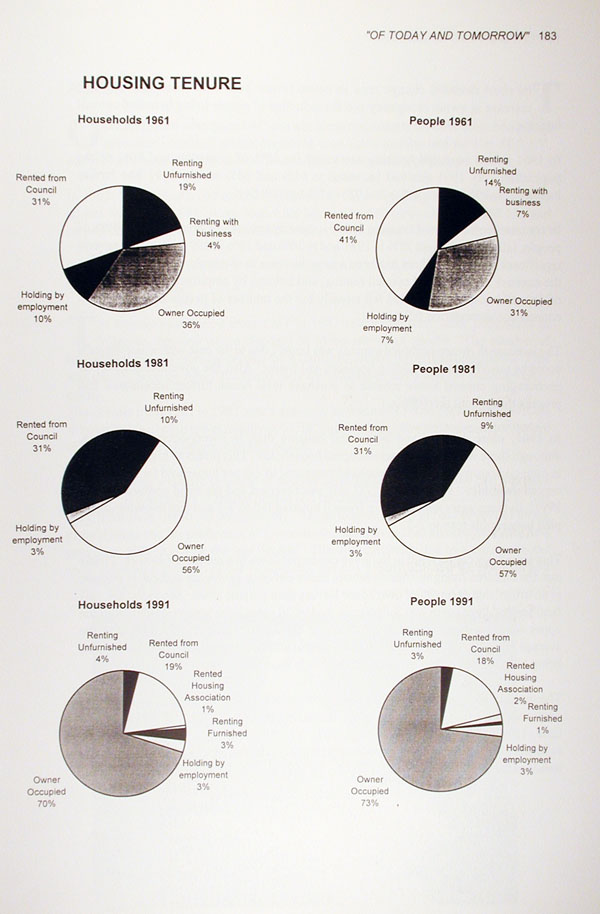
HOUSING TENURE
(Back to Chapter 5 Index)

The most dramatic change seen in house tenure over these years has been the increase in owner occupancy and the reduction of people living in rented council housing.
In 1961 owner occupied housing accounted for 36% of properties and 30% of the population. By 1981 this had increased to 61% and 64% and by 1991 had further increased to 70% of properties and 78% of the population.
In contrast rented council housing in 1961 represented 31% of the properties and 40% of people, falling to 29% and 27% in 1981 and to 20% and 19% in 1991. There are several significant facts here. There has been a large increase in ownership housing largely at the expense of private and council renting, and holding by employment. The number of council houses being rented fell steadily but the number of people living in rented council accommodation fell hugely.
The increase in owner-occupied housing was largely due to the ease with which finance could be raised through Building Societies and Banks. Also, the government policy of encouraging council house tenants to purchase their house further accelerated this process throughout the 1980s.
In 1961, more people lived in council housing that in owner-occuped housing, although there were more owner-occupied households. This points to higher densities in council housing 3-8 per household as compared to 2-4 per household for owner-occupied dwellings. However, by 1981 this was reversed and the trend continued up to 1991. In these years the density in council housing fell to 2-3 and that in owner-occupied housholds roe to 2-8.
This seemingly contra trend in Sulgrave can be put down to a number of factors. Firstly that the children living in council houses move out once grown up and either migrate to an urban area or buy their own house leaving their parents alone. Secondly, the new families that have come into Sulgrave in the last 20 years have been primarily from the upper socio-economic bracket and thus can afford to have more children than the average. Finally, easier methods of birth control and greater emphasis on material well being has resulted in less children among the lower income brackets.
The number of households in Sulgrave as measured in the census reforms remained very constant between 1961 and 1981, increasing by only 1 from 117 to 118 in that time. However, by 1991 it had risen to 151. Virtually all these new households were in newly built family houses or retirement bungalows thus greatly contributing to the trends outlined above.